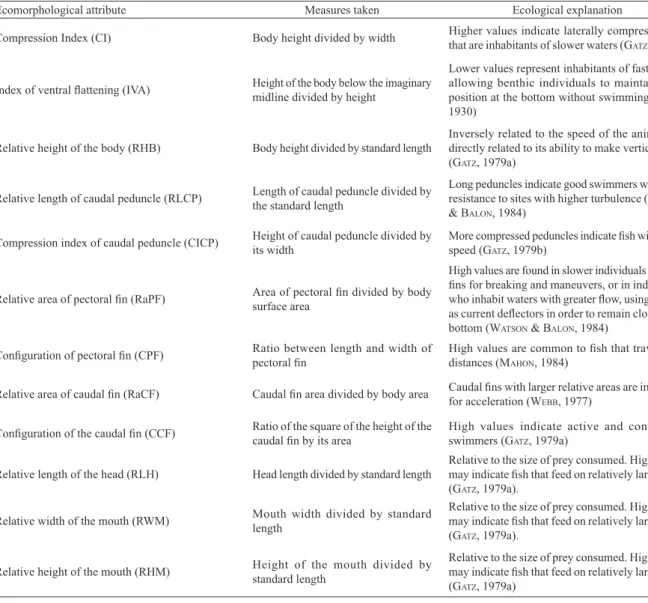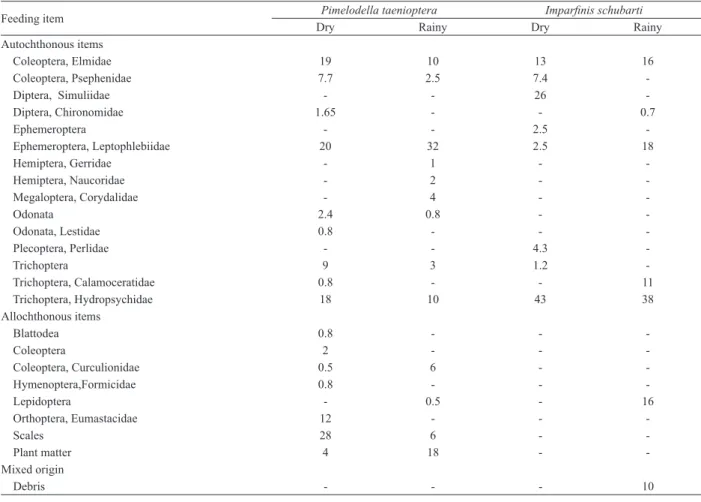Ecomorphology and diet reflect the spatial segregation between two Siluriformes species inhabiting a stream of the Bodoquena Plateau, in Central Brazil
Texto
Imagem




Documentos relacionados
The yellow peacock bass ( Cichla kelberi Kullander and Ferreira, 2006) is among the fish species used for fish culture and introduction in new reservoirs (stocking), private
bonariensis showed ontogenetic and spatial variations in the main items consumed, the main items were always insects and its diet was composed exclusively of invertebrates..
Food items grouped in broad taxonomic categories and expressed as per cent composition values show that aquatic insects (50%) were the main components of the diet, followed
Ordination plots for species (a) and plots (b) resulting from canonical correspondence analysis based on the density distribution of 13 tree and shrub species represented by at
In conclusion, the results of this study suggest a diet composed of aquatic plants, predominantly of the Poaceae family, and a differentiated behavior for food selection by the
1.824, do Código Civil, estabelece que “o herdeiro pode, em ação de petição de herança, demandar o reconhecimento de seu direito sucessório para obter a restituição da
O método econômico baseia-se em alguns postulados que, uma vez adquiridos pelo ju- seconomista, facilitam a análise econômica dos fatos jurídicos (GICO JR.; 2010: 22-23),
Assim, como estes fatores possuem forte influência sobre os organismos presentes nos habitats do entremarés (Wulf, 2005; Cárdenas et al., 2012; Singh & Thakur, 2015), o nosso